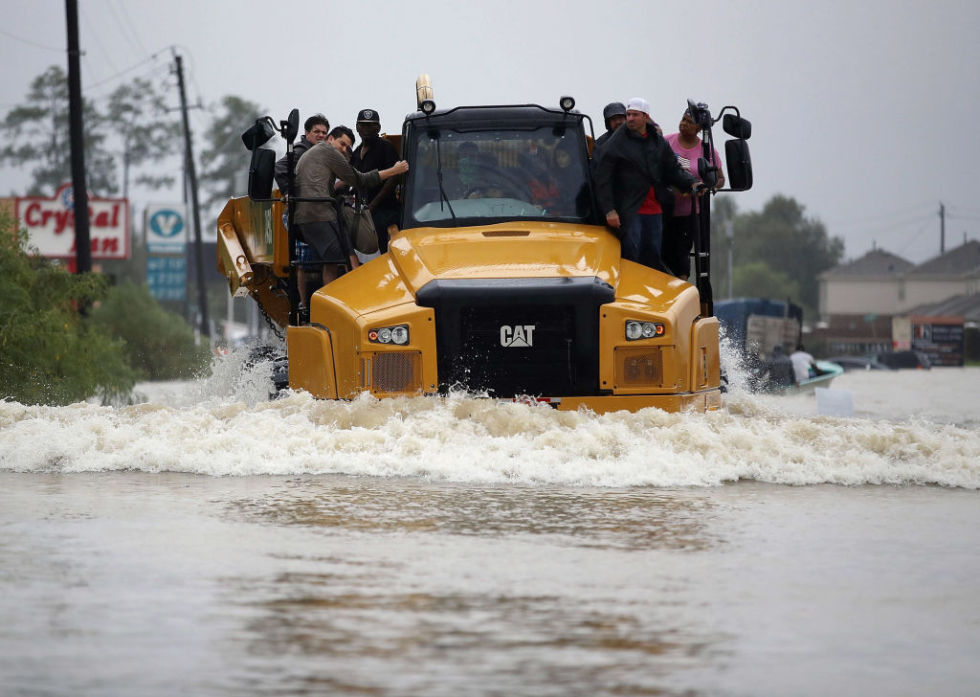-

People catch a ride on a construction truck as they evacuate their homes after the area was inundated with flooding from Hurricane Harvey. This gallery highlights scenes from around a ravaged Houston. [credit: Joe Raedle/Getty Images ]
When Hurricane Ike made landfall in 2008, Bill Merrell took shelter on the second floor of a historic brick building in downtown Galveston, Texas, along with his wife, their daughter, their grandson, and two Chihuahuas. Sustained winds of 110 mph lashed the building. Seawater flooded the ground floor to a depth of over 8 feet. Once, in the night, Merrell caught glimpses of a near-full moon and realized they had entered the hurricane’s eye.
Years earlier, Merrell, a physical oceanographer at Texas A&M University at Galveston, had toured the gigantic Eastern Scheldt storm surge barrier, a nearly 6-mile-long bulwark that prevents North Sea storms from flooding the southern Dutch coast. As Ike roared outside, Merrell kept thinking about the barrier. “The next morning, I started sketching what I thought would look reasonable here,” he said, “and it turned out to be pretty close to what the Dutch would have done.”
These sketches were the beginning of the Ike Dike, a proposal for a coastal barrier intended to protect Galveston Bay. The core idea: combining huge gates across the main inlet into the Bay from the Gulf of Mexico, known as Bolivar Roads, with many miles of high seawalls.
No comments:
Post a Comment